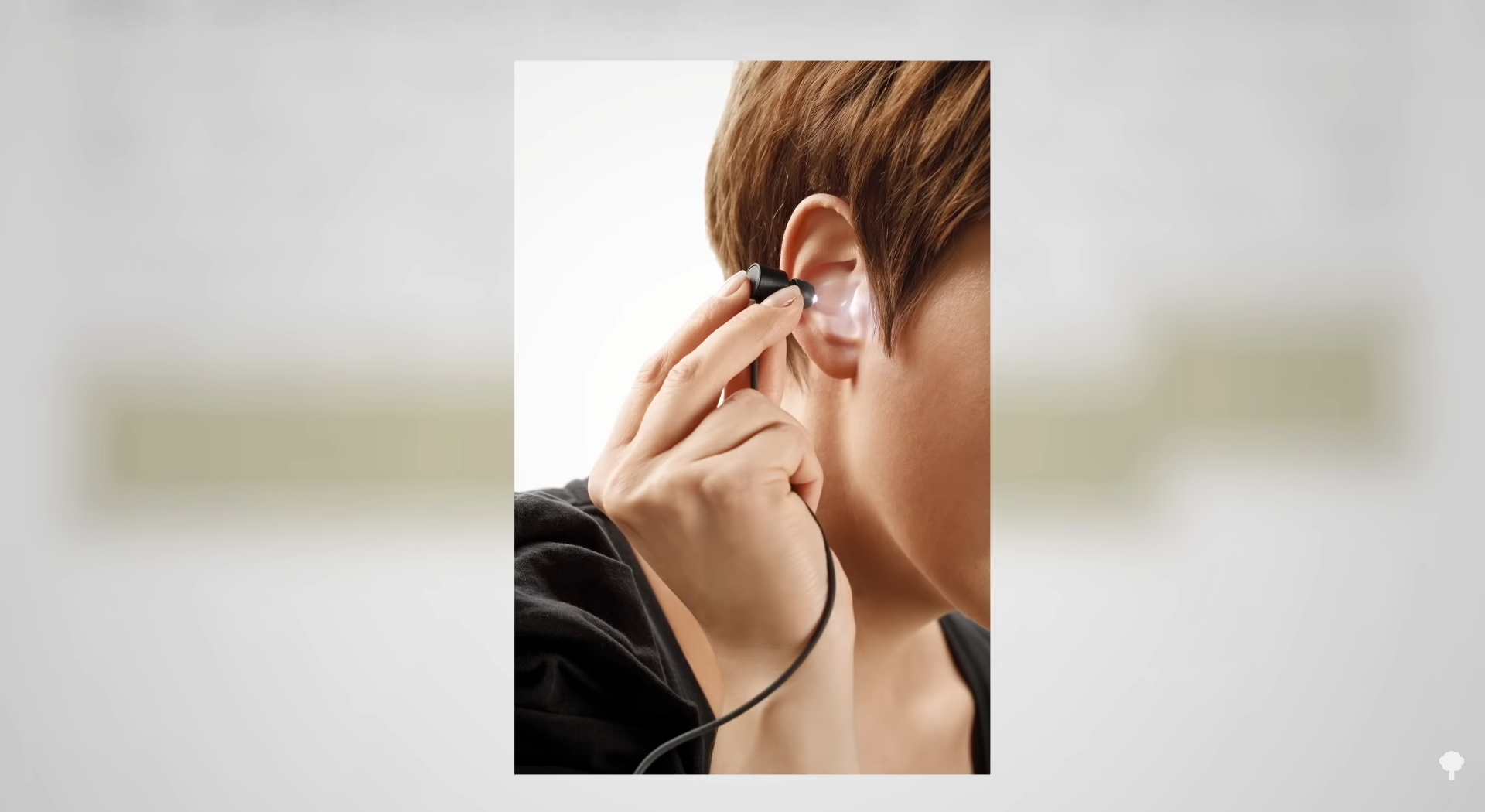
Use cheat sheets to figure out exactly when and how to treat jet lag using light exposure and light avoidance at specific times of the day, based on which direction you’re going and how many time zones you cross.
“Jet lag is a blessing to circadian biologists because the disruption of mental and physical well-being immediately highlights the importance of our internal ‘body clock,’” the focus of their work. Much of the general malaise we may experience on long journeys may just be “so-called ‘travel fatigue,’” which can occur “regardless of the mode of transport and the number of time zones crossed,” leaving people feeling disorientated, generally weary, and headachy.
Dehydration has been blamed. The air circulated in the cabins of commercial airlines is pretty dry, but even though it can make your throat, skin, and eyes feel dry, the maximum loss of fluid through breath and sweat, for instance, wouldn’t be more than about an extra half cup if you actually did the math. So, it isn’t as though you’re in Death Valley or the Sahara when on a flight. “Further, the calculation assumes that the passenger would be nude,” and I’m sure the airline would charge you extra for that!
Of course, “airplane food—if any is served—tends to be starchy and sugary,” and giving passengers salty snacks like pretzels during a flight doesn’t help. “The vegetarian…special meals are sometimes an improvement, but you must order them in advance. BYOF—bring your own fruit—is a good rule to fly by. A small bag of unsalted almonds or walnuts is a healthy alternative to those skimpy bags of salted peanuts.”
The cabin air isn’t just dry, though; it’s also low in oxygen pressure, about what you’d get at 10,000 feet above sea level, which is about twice as high as Denver. That alone can make you feel lousy. Then, when you land, if you’ve crossed enough time zones, you can suffer from jet lag.
Jet lag is the temporary disconnect between the new time at your destination and that of your own internal body clock, which is still on home time. “This desynchrony is abnormal,” since our internal clock is normally synced to the outside world. Symptoms of jet lag do go away, though, as your body becomes hip to the new time. The “duration of jet lag in days can be calculated to be two-thirds the number of time zones crossed eastwards, compared with half the number of zones crossed westwards.”
Let’s look at an example. As you can see below and at 2:04 in my in my video How to Treat Jet Lag with Light, London is six time zones eastward from Chicago.
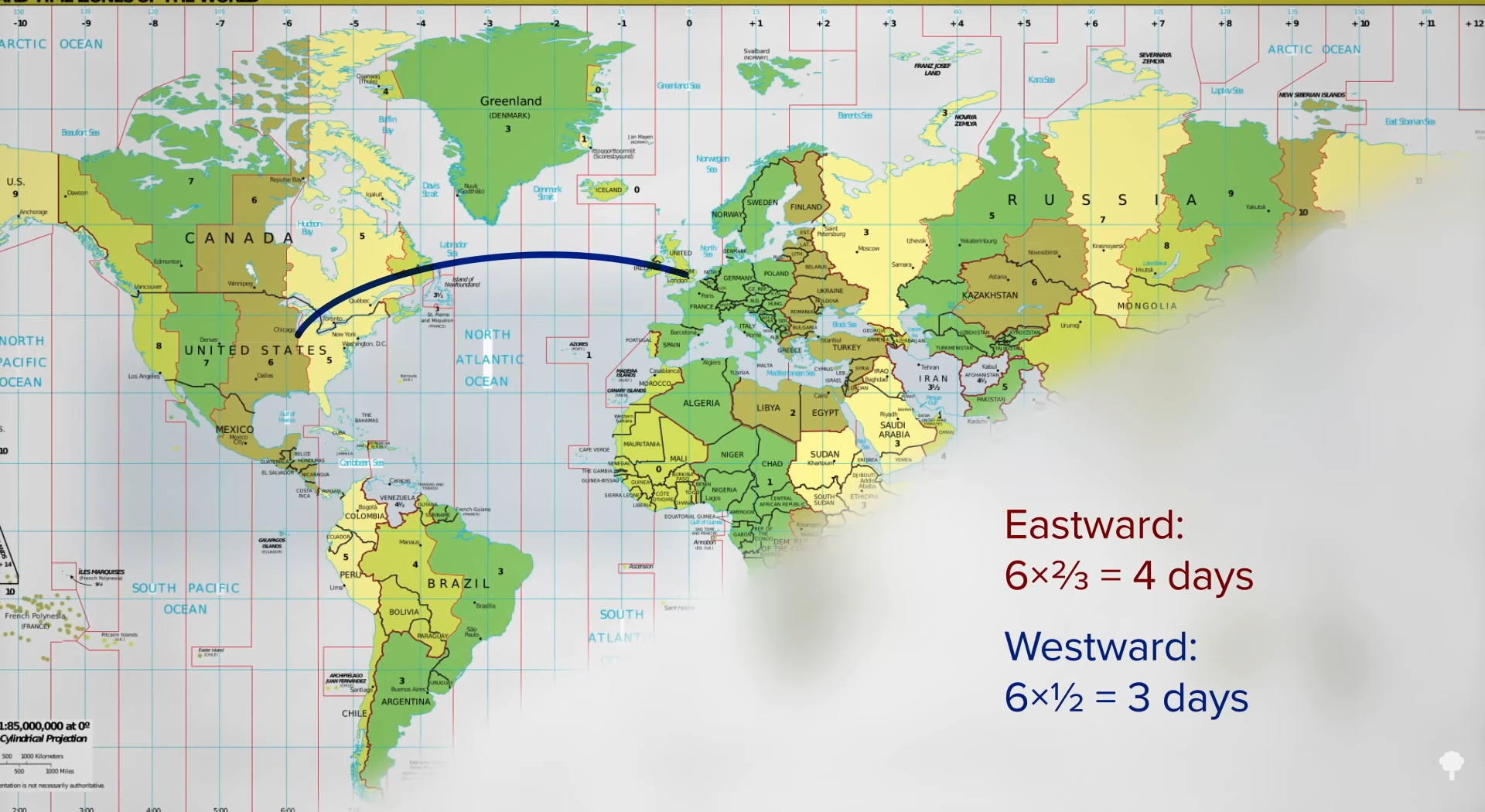
So, after flying there, it may take four days before you get back to normal—six eastward time zones multiplied by two-thirds. On the other hand, Londoners flying westward to Chicago should get over their jet lag in only three days—six westward time zones divided by two. The reason it’s easier to go westward, where the day is longer, than it is to go eastward, is because our internal clock is naturally set for longer than 24 hours—“closer to 25 h,” in fact—and has to be reset every day. “It is for this reason that the observed rhythms are called circadian (from the Latin: about a day.”
Interestingly, you can see this in Major League Baseball performance. Researchers churned through 40,000 games, mining 20 seasons, and found “surprisingly specific effects of circadian misalignment [jet lag] on athletic performance under natural conditions.” Indeed, the “jet-lag effects were largely evidence after eastward travel with very limited effects after westward travel, consistent with the >24-h period length of the human circadian clock.” Okay, so how do you treat it?
As you can see below and at 3:05 in my video, you first need to decide whether it needs to be treated at all. If you’re just traveling over one or two time zones, you don’t have to worry about it. If you’re crossing three or more time zones, for instance traveling coast to coast, jet lag “will be experienced,” so it then depends on how long you plan on staying. If only for a few days, it’s probably not worth treating, because you’ll then have to switch back as soon as you return home. “In these cases,” if you have control over your schedule, though, it’s better to “time appointments in the new time zone to coincide with daytime in the home zone that has been left, and to avoid times that coincide with night on ‘body time.’” So, it’s pretty much common sense: If you travel east, your body will still think it should be sleeping in the morning, so you should push your activities to later in the day, and vice versa. But, if you are going to be gone for a while, for a week or more, for example, you can adjust your body clock using behavioral methods and/or drugs, supplements, or foods.
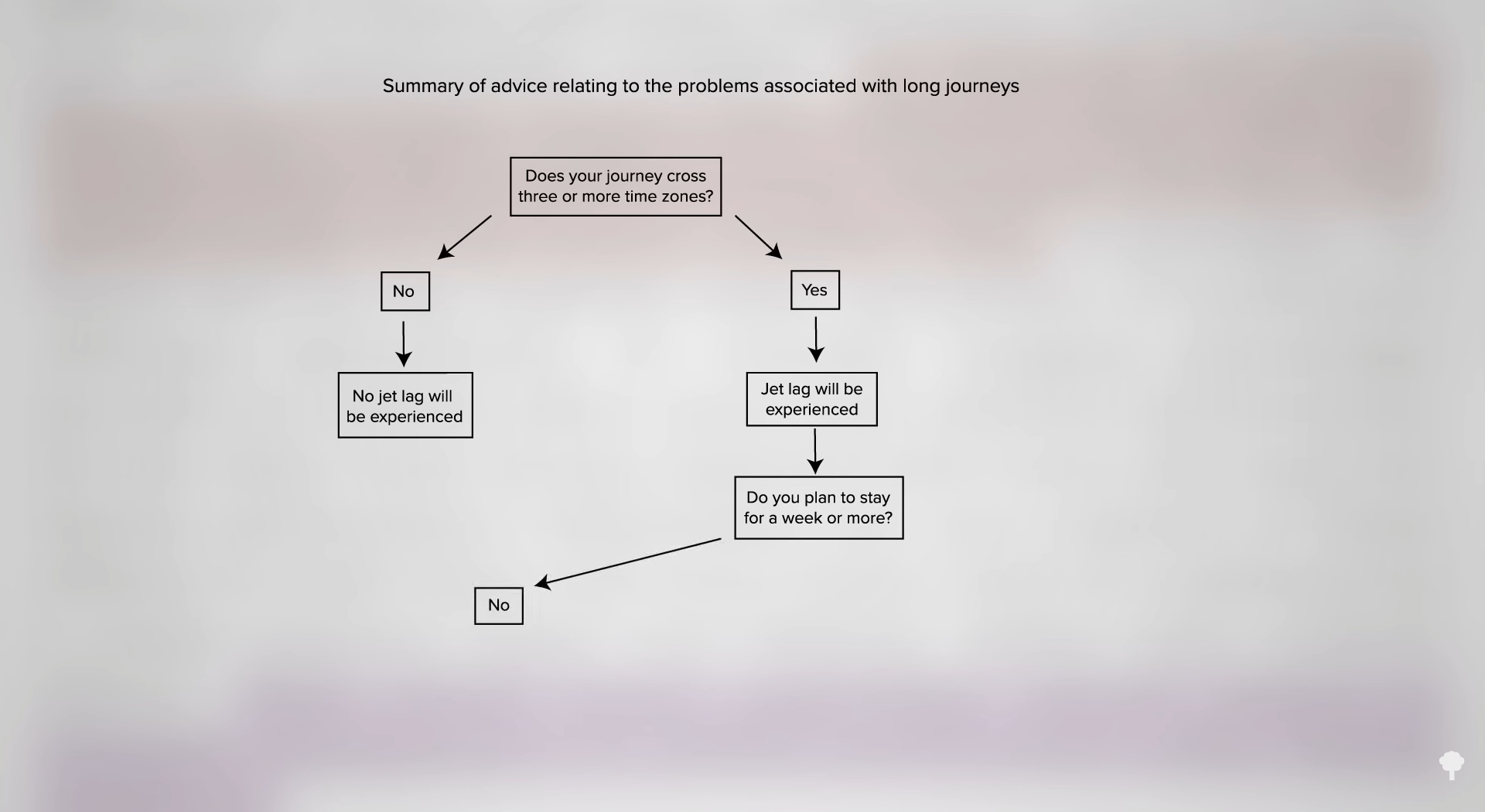
“There is only one sure fire way to avoid jet lag altogether and that is to adapt to the new time zone before flight,” meaning before you leave on your trip. Changing your home sleep schedule more than two hours, however, can be “counter-productive,” because it will interfere with your pre-trip sleep and you don’t want to go into a long trip already sleep-deprived. In fact, before your trip, you want to maximize your sleep. In flight, as you can see below and at 4:12 in my video, the recommendation is for “immediate adjustment to destination meal and light schedule,” although this is easier said than done. Then, once you land, you want to “attempt to maintain destination sleep schedule.” Try not to nap for more than 15 to 30 minutes, and don’t drive around when your body thinks it’s the middle of the night.
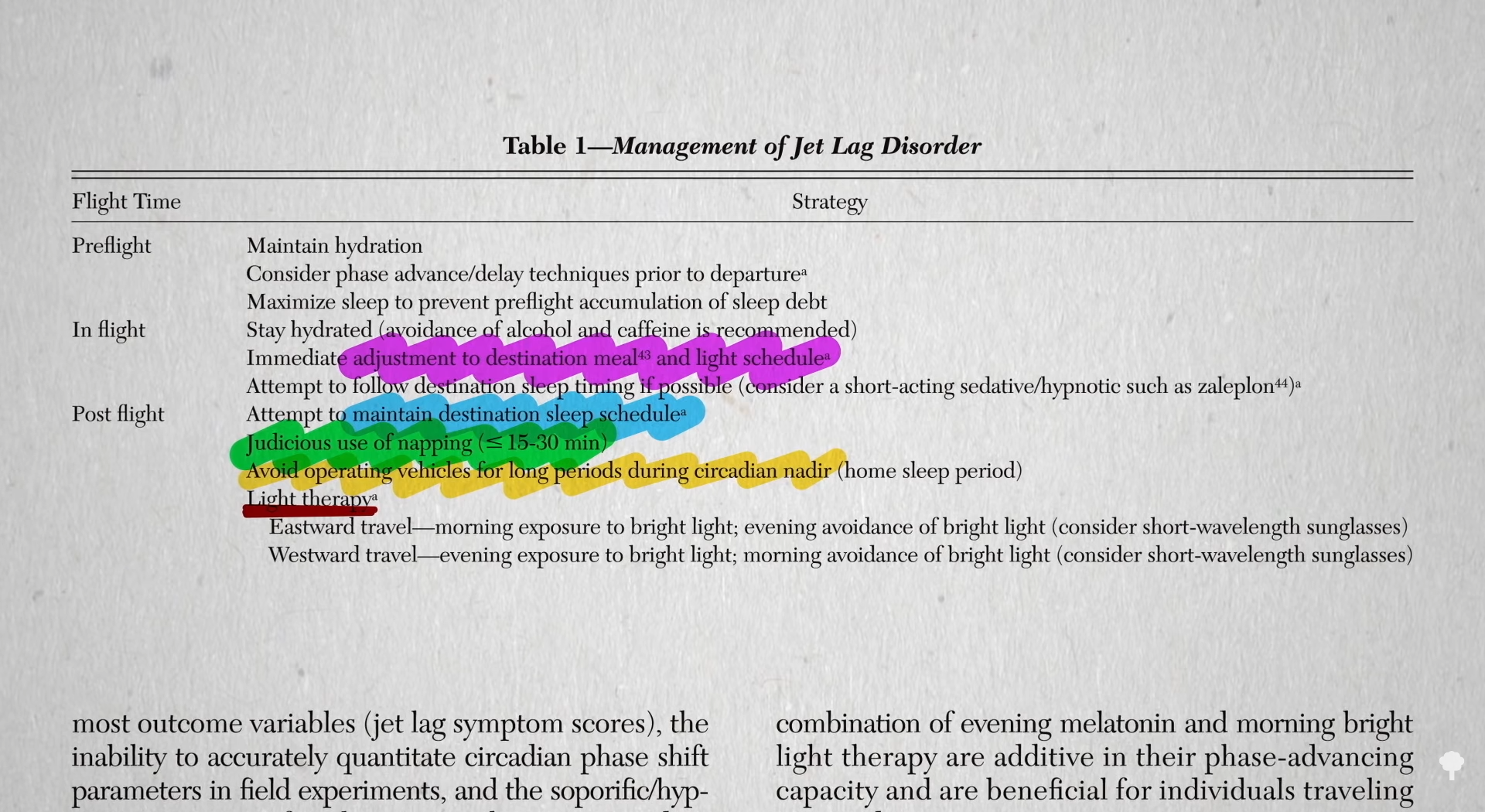
The real key to treating jet lag, however, is light therapy. Traveling eastward, you expose yourself to the bright light in the morning and avoid bright light in the evening. The opposite is the case when traveling westward—“evening exposure to bright light; morning avoidance of bright light…” Seems simple, right? It’s actually a bit more complicated than that. “The advice changes…if you’ve traveling through more than six time zones—say from Boston to Athens. Your biological clock may adjust in the wrong direction, reacting to light in the morning as if it were afternoon.” Okay, but what if I tell you it’s even more complicated than that! “The effects of light acting upon the body clock” are actually only during a specific window around the time your body temperature bottoms out, which is usually around 4 AM. As part of our circadian rhythm, our body temperature typically drops from 98.6 degrees down to more like 97.6 degrees, even when we aren’t sleeping, as you can see below and at 5:02 in my video.
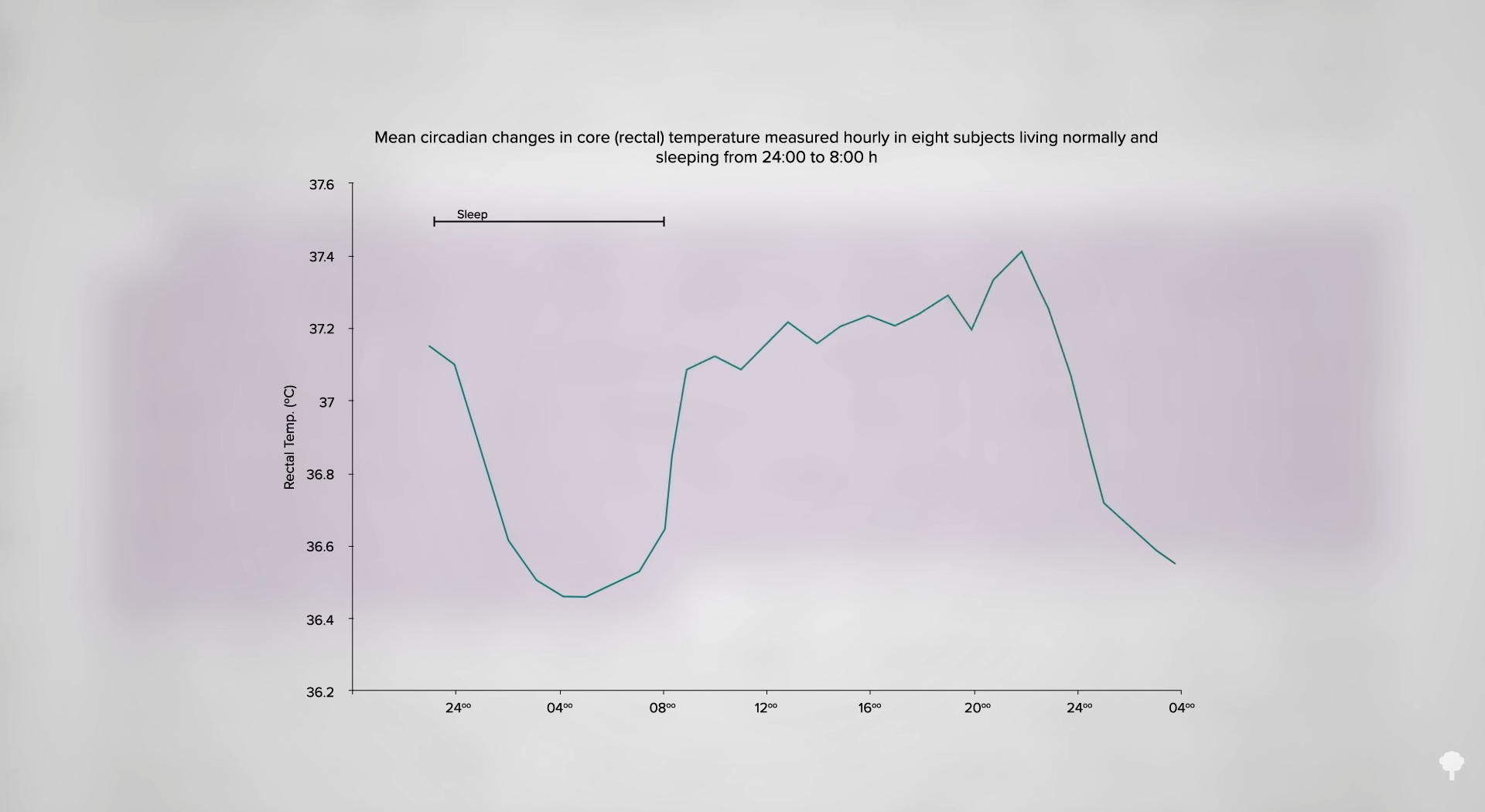
What’s the bottom line? I feature two cheat sheets at 5:12 in my video, which you can see below. Snap a picture or screengrab them for future reference. If you fly eastward across eight time zones from Los Angeles to London, for example, on day one, you should avoid light between 6 AM and noon local time and then expose yourself to light between noon and 6 PM. local time. The rest of that first day, your light exposure won’t matter and won’t affect you either way. “On subsequent days, the local times of light avoidance and exposure need to be advanced earlier by 1 – 2 h each day until light avoidance coincides with nocturnal sleep,” that is, when you’re sleeping at night.
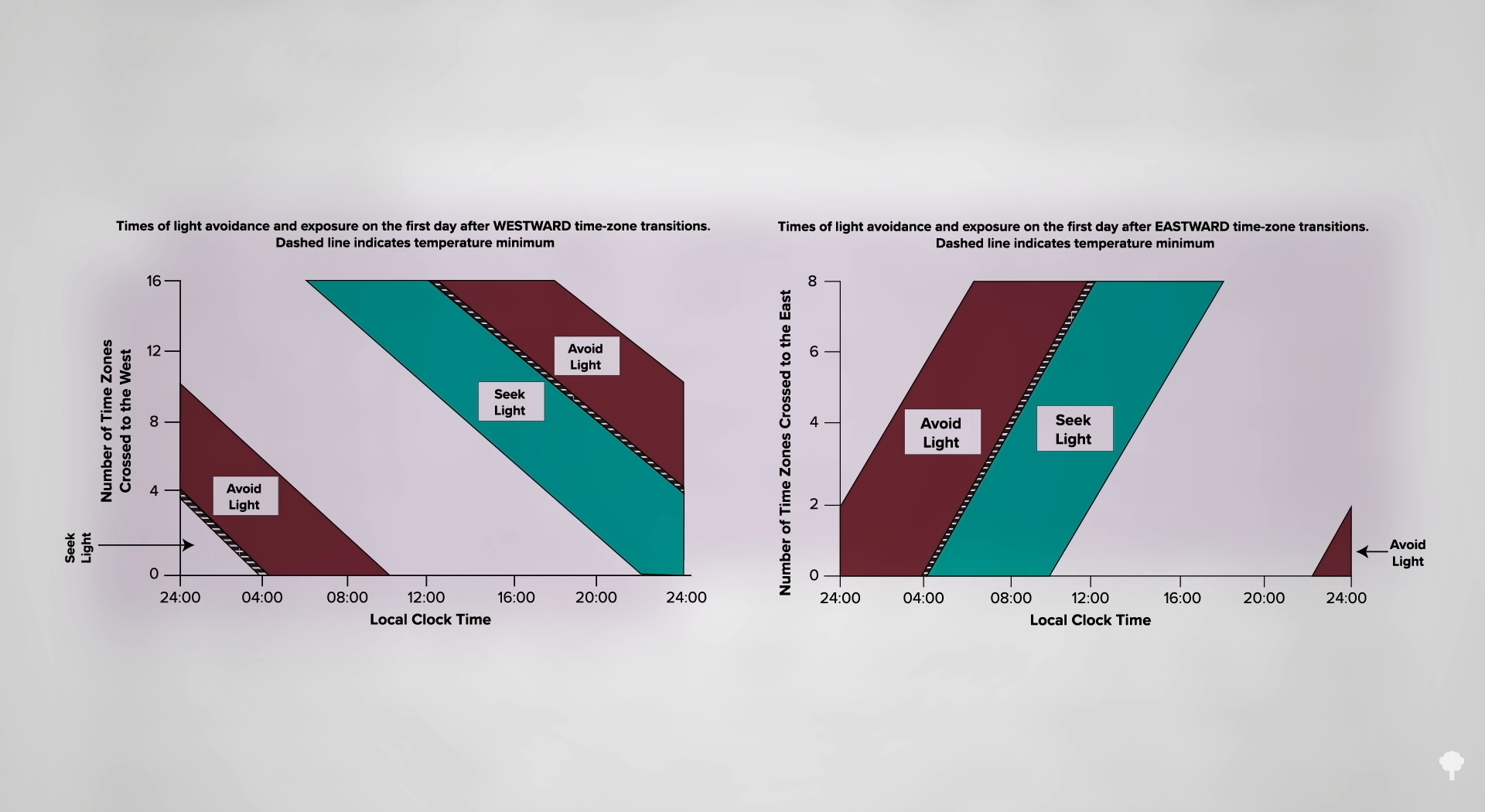
But, on those first few days after traveling eastward, note that you’ll want to avoid morning light, which “can be difficult to achieve, particularly on the day of arrival, since many flights are overnight and land in the morning…” One thing you can do is wear really dark glasses until you get indoors. Of course, if they’re too dark, you can’t really drive, which is when those not-so-attractive orange lenses that block blue wavelengths can come in handy, as they prevent the dip in melatonin you can get with regular sunglasses, as you can see below and at 6:09 in my video. Regardless, the next day, you might have the urge to get “out and about,” but that could actually make your jet lag worse by taking you in the opposite direction.
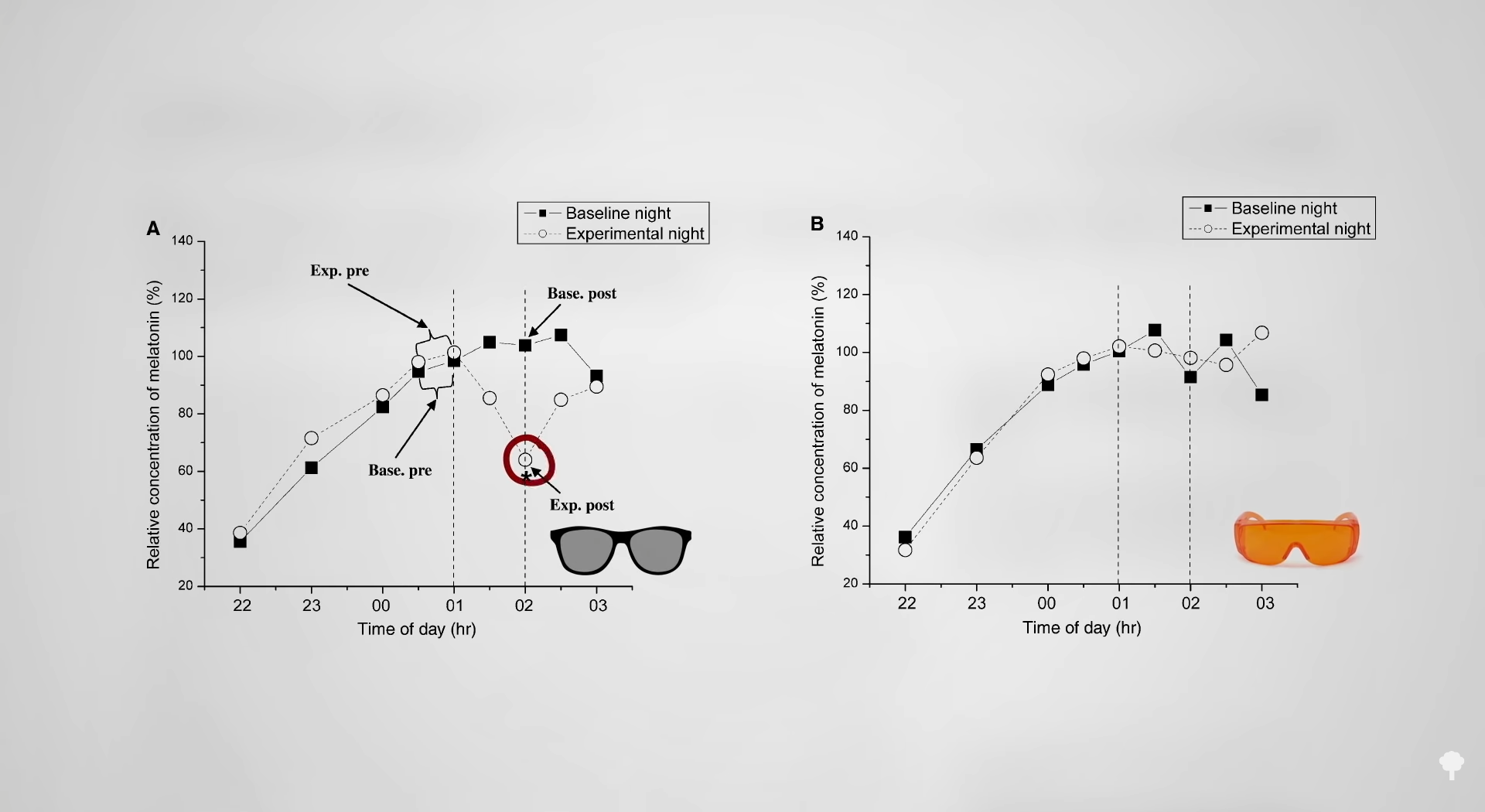
What about if you’re flying eastward more than eight time zones? In that case, you subtract the number from 24 and treat it as travel westward. For instance, an eastward trip across ten time zones—New York to Delhi, say—should be treated as a westward flight, requiring a delay of the body clock across 14 time zones. In that case, it would be easy to get outside and get some sun, but what would you do if you just went four zones westward and needed to get light in the middle of the night?
One gadget company came up with light-emitting headphones, which you can see below and at 6:57 in my video. The theory is that you could bathe your brain in light directly through the ear canals. Researchers stuck them on the heads of cadavers and did seem to get some light penetration, but you don’t know…until you put it to the test. A randomized, double-blind, placebo-controlled trial demonstrated that “transcranial bright light exposure via the ear canals alleviates jet lag symptoms.” Or…you could just turn on a lamp.
